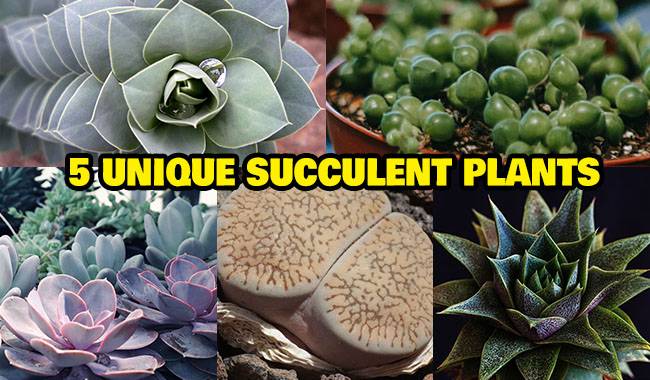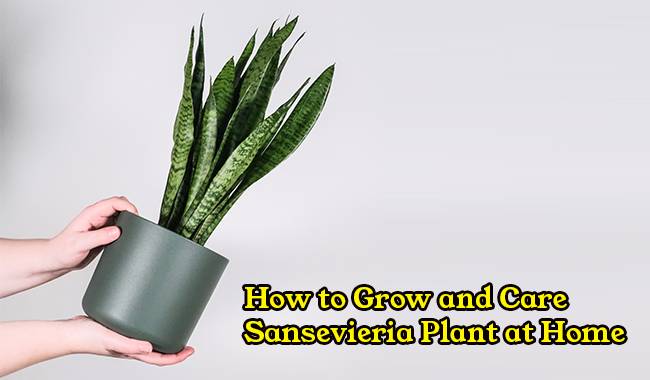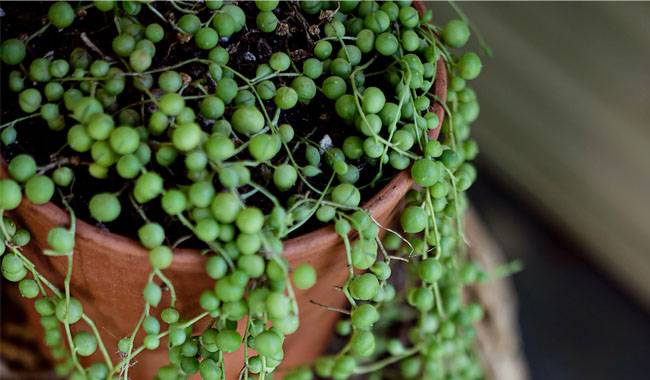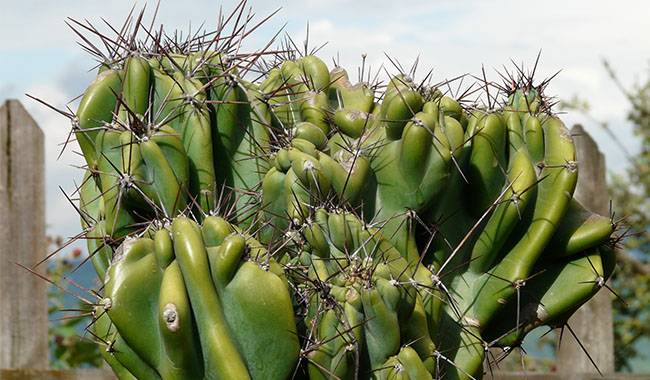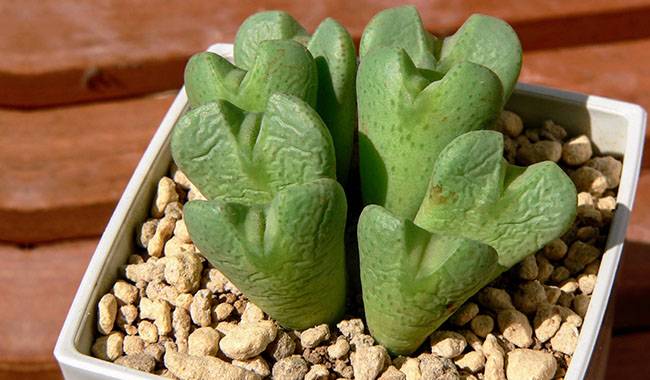
Among the many succulents, those that look like pebbles stand out. They are known as “living stones.” Scientifically, they are known as conophytums. They are native to the stony deserts located in southern Africa.
The genus Conophytum belongs to the Aisobium family. Their distinctive feature is that 2 fleshy fused leaves represent the above-ground part. They have a heart-shaped form, or resemble a nodding ball, or take the form of a truncated cone with a rounded edge. Short stems are in the soil. The color of these leaves can be blue, green, or brown and may have small spots on the surface. This allows the plant to practically blend in with the many stones it likes to grow on.
The flowers of conophytum are very beautiful. It begins almost simultaneously with the active growth period. The flowers are quite large, densely colored, and shaped like daisies or funnels.
The plant has a distinct life cycle with a dormant period and a growing season when rainfall and drought are in the flower’s native habitat. These periods may not vary much between species. However, most have an increasing season in winter and a dormant period in the early spring to early fall months, or from late winter to midsummer days.
This plant has the unusual feature that the young leaves grow inside the old ones. However, as time goes on, the older leaves dry out and become thinner. And they are a protection for the young leaves.
HOW TO CARE FOR CONOPHYTUM AT HOME
Temperature and brightness
Such plants will grow and develop properly in a dry and cool 50-64 °F (10-18°C) room, which should be fairly well ventilated. Diffused light is preferred. Do not allow the trypanosomes to overheat. Please protect it from direct sunlight, which can cause burns on the leaves, especially on young specimens. The seedlings should be gradually accustomed to sunlight exposure.
Soil
Suitable soil should always be loose. To make a potting soil mixture, you can mix river sand, humus, and red clay in a 2:2:1 ratio. You can also use a commercial potting soil mixture for succulents and cacti. Remember, peat mixtures should not use for planting.
Fertilization
Fertilization is relatively infrequent, usually once or twice every 12 months. A low nitrogen content potash fertilizer is suitable. Take 1/2 of the recommended dose. Should not give recently transplanted plants any fertilizer.
How to water
Watering “Living Stones” through trays should not allow the liquid to get on the surface of the leaves. Sometimes sprinkling is done. However, in this case, you need to make sure that the flowers are as enveloped in mist and that there are no water droplets on the leaves.
Dormant period
When growing Conophytum, you should not forget about its life cycle. Therefore, you should stop watering completely during the rest period. After the active growth period, you can start watering again. At this time, new leaves should appear among the old, wilted leaves. This is also the time when the plant blooms. The flowering period for various species lasts from June to September.
Watering should be done every 7 days in the fall and just once every 4 weeks in the winter. At the end of the peak growth period (February-March), increase the watering frequency slightly. At this time, new leaves will begin to form within the older leaves.
The leaves should fade and retract as a completely natural process.
Transplanting Conophytum
It should not replant often. You can usually transplant them every 2-4 years. The transplanting can be in progress at any time of the year, but the best time is the end of the dormant period. Conophytum should not water until it is replanted. All old soil should be removed from its root system and washed off if needed. Shallow containers are suitable for planting. It is important to make a good drainage layer at the bottom with at least 0.6 inches (1.5 cm) of expanded clay. After transplanting, the first watering should be done after half a month and apply no fertilizer for some time.
These plants are long-lived. Thus, they can live 10 to 15 years. However, as they get older, they grow back. As a result, the stems become longer, and therefore Conophytum loses its spectacular appearance.
CONOPHYTUM PROPAGATION METHODS
This plant can be propagated by cuttings or by seeds.
To propagate from cuttings, you can gently cut a leaf and part of the stem and plant it in the soil to take root. The first watering should be done about 3 weeks after planting, during which the cuttings have grown roots. Some experienced growers recommend leaving the plugs outside to dry for 1-2 days. The plugs can then be treated with isoflavone powder or colloidal sulfur.
Seed propagation is more complicated. The plant is cross-pollinated. The small seeds take a long time to mature, about 12 months. Place the picked fruits and the seeds inside in a cool, dark place. Soak them for a few hours before planting.
The seeds are sown in autumn at the beginning of the vigorous growth period. They are placed on a moist soil surface and covered with sand. It is recommended to cover the container with aluminum foil. The substrate should always be slightly moist until the first shoots appear.
Seeds germinate best in a cool environment, but they need to be exposed to temperatures that fluctuate day by day. For example, it should be 62-68 °F (17-20 °C) during the day and no higher than 50 °F (10 °C) at night.
After half a month of germination, the aluminum foil should be removed. Place the plant in a cool, well-ventilated place. 12 months later, the formation of the plant is complete, and the first blooms appear after 1.5-2 years.
PESTS AND DISEASES OF CONOPHYTUM
Fairly resistant to diseases and pests. In rare cases, bugs or spider mites may settle in them. Plants may also rot due to over-watering. Inadequate watering, high temperatures, and lack of nutrients can negatively affect the growth and development of live rock.
More Related Information About Ornamentals Plants




